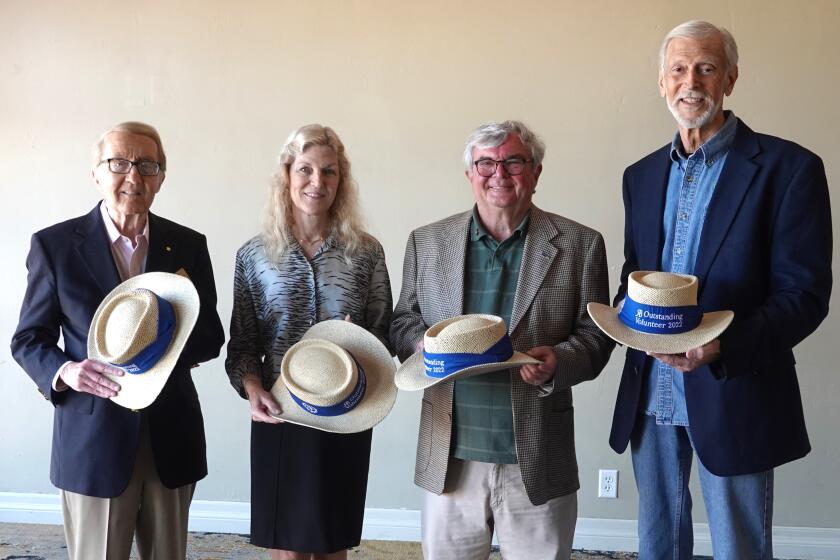Roberts: No one-size-fits-all solution for San Diego County’s homeless problem
County Supervisor Dave Roberts says it is better to give panhandlers information on where they can get assistance than money.
“Please do not give them money at the intersections,” Roberts said when speaking at the Conservative Order for Good Government luncheon in Rancho Bernardo on Aug. 11. “If you feel it is safe, say to them that services are available.”
In Rancho Bernardo and other North County communities, Roberts said panhandlers and homeless should be referred to Interfaith Community Services in Escondido. The number is 760-489-6380.
If one does not feel comfortable or safe approaching the individual, he said there are other avenues to assist them without making contact. For example, call the police or sheriff’s department’s non-emergency numbers, child protective services if a homeless adult is accompanied by an infant or child, or county animal services if the individual has a pet.
“Sometimes you need to be creative to work around the issues,” Roberts said.
While homeless individuals have a constitutional right to be in public places, if something does not look right with a situation, one of these agencies can be called to assess and perhaps get the person help, he said. Getting them help, especially for mental illness, is cheaper than incarceration costs after they commit a crime.
Roberts said an annual homeless census conducted last January found 8,742 homeless people living in San Diego County, a 2.8 percent increase over the 2014 figure. It is about 70 percent men, 30 percent women. While efforts were made to make in-person contact with every homeless person, he said some were likely missed so the number is probably higher.
He said San Diego has the fifth largest homeless population in the United States, with one in five homeless residing in North County. Reasons vary from mental illness to substance abuse, unemployment to escaping domestic violence. Many are veterans and because every homeless person’s story and situation is different, there is no one-size-fits-all solution.
Roberts said he has seen first-hand how homelessness is a problem not just for the individual, but society. On Oct. 30, 2013, he was in Kearny Mesa to give a speech when a man jumped out of a van and tried to stab him.
“I was in the wrong place at the wrong time,” Roberts said.
It turned out the man had mental health issues. Wanting to know his attacker’s story, Roberts said he found out the man had been living in his van in Rancho Bernardo. He was married, but his wife had left him and his life began to “spin out of control.” Upon a search of his van, police realized his issues included hoarder syndrome.
“It was full of trash, garbage and weapons,” Roberts said. The man was arrested, but mentally incompetent to stand trial. So he was placed into treatment for 11 months.
Roberts said the county has a comprehensive policy to address homelessness instead of just utilizing stop gap emergency measures, which “do not serve them in the long term.”
“Our goal is to break the cycle of homelessness,” he said.
Three county departments are among those working on the issue. For example, Health and Human Services works to get those with substance abuse stabilized and into a transitional housing program. The housing department provides hotel or motel vouchers, gets people with HIV/AIDS into emergency shelters, and provides rental assistance to veterans, the disabled and seniors. Public safety often helps young women with children, many of whom escaped domestic violence.
The county is also among those in the 25 Cities Project, which works with veterans. Around 1,000 veterans were recently helped during the annual Stand Down, a three-day event near Balboa Park.
Roberts said San Diego has one of the largest homeless veterans populations, partially due to this being the last place they are stationed before separating from the military. Weather is another factor. He said more needs to be done to help veterans, especially those with mental issues after serving in combat.





